Nickelback's Chad Kroeger reveals the 10 guitarists who shaped his sound – and they're heavier than you might expect
The Canadian rocker on the two guitarists he'd love to see face off in a downpicking contest, how a Dimebag Darrell solo ended up on a Nickelback song, and what it's like to play Angus Young's Gibson SG
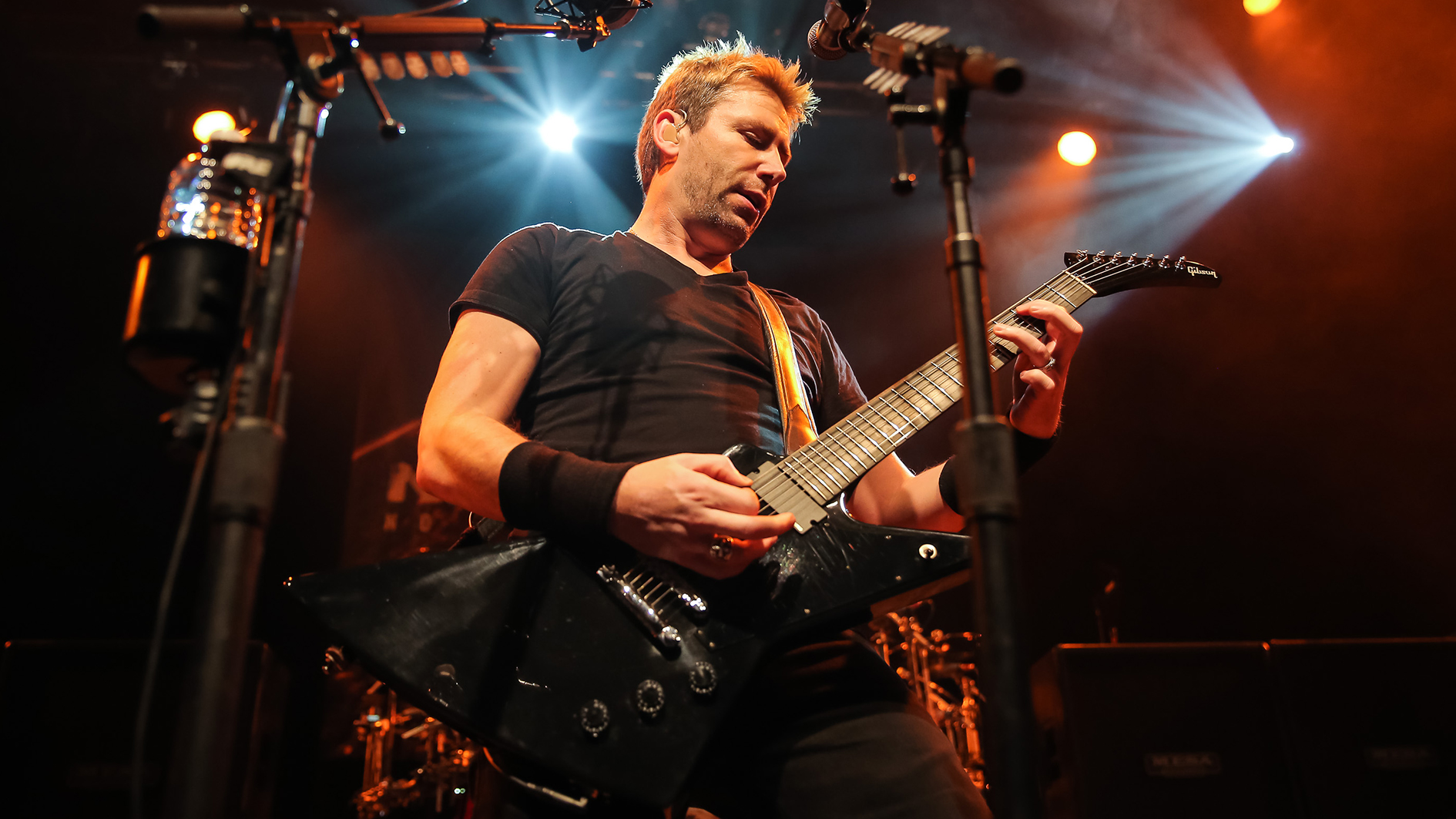
When Nickelback frontman Chad Kroeger sang the line “I want a new tour bus full of old guitars” on 2006 hit single Rockstar, he managed to epitomize what every guitar player around the world dreams about at night in 10 simple words.
In his case, the aspirations he had as a young musician became a reality and he’s now been filling the world’s biggest arenas for the last two decades.
Of course, you can bet your bottom dollar he travels in style wherever he goes – the buses won’t just be new, they’ll be top of the line and kitted out with the latest and greatest features. Rough and tough nights in splitter vans must seem like a lifetime ago for Kroeger and his cohorts.
Similarly, you’d expect his house to be full of vintage rarities worth obscene amounts of money – the kind that only extreme rock stardom can bring. Which begs the question: how many relics does he own and which is the most senior instrument in his collection?
“A new tour bus full of old guitars… well, that’s the dream, right?!” he laughs, when Guitar World connects with him at the studio. “Let me have a look around and see what I’ve got. I actually don’t have that many old guitars, believe it or not.
“The oldest is a 1967 Gretsch. Yeah, I don’t let people pick that one up [laughs]. In this studio there are guitars everywhere, probably about 40 in total. There’s a mandolin over there. A ganjo… is that what we’re calling them these days?
“There’s a bit of everything. A bunch of acoustics in different tunings, one is in a Nashville tuning. There’s a ginormous Explorer behind me. I don’t even know what that bottom string is, probably way into the 60s. It’s like a telephone cable. In total I probably own about 100 guitars.”
Get The Pick Newsletter
All the latest guitar news, interviews, lessons, reviews, deals and more, direct to your inbox!
Now, that might sound excessive for most players, but when you’re the singer and guitarist in Nickelback, it’s a fairly moderate figure. And if you think you’ll find a 1959 Gibson Les Paul Standard in that collection, think again.
Kroeger doesn’t want to entertain the idea of having an instrument worth hundreds of thousands lying around the house, like an accident waiting to happen. He’d much rather his conscience stays clean.
“Honestly, I would be afraid to own one,” admits the How You Remind Me crooner. “I’d be so terrified of somebody setting it down and we’d all walk away, but it wouldn’t be sat in the stand properly and would end up doing that thing we’ve all seen a million times where the guitar slowly falls over and everybody screams. It happens in slow-motion and then bang, the neck cracks [laughs]!”
Mr. Kroeger is speaking with us today ahead of the release of his band’s 10th studio album, titled Get Rollin’ and once again co-produced by Chris Baseford. Lead track San Quentin surprised many with its metallic heaviness – though, to be fair, it’s a side of Nickelback that has always been there, as anyone who has listened to more than just the obligatory singles will be able to attest.
Being well aware of how divisive they can be, the singer/guitarist goes on to explain that shattering expectations and converting skeptics into fans is one of the group’s favorite pastimes. To put it bluntly, they live to conquer and rise to any challenge.
“People nowadays get one little taste of something and formulate this opinion before they’ve done any homework,” answers Kroeger, when we point out Nickelback could very well be one of the most misunderstood acts working in rock music today.
“I think too many people around the world have only heard our ‘radio songs’ and I love it when they get shocked at a show. They always wind up saying the same thing: ‘I never know you guys were that heavy!’ That’s my favorite compliment. We’re a hard rock band who learned how to write in more melodic ways.”
San Quentin was soon followed by second single Those Days, supported by a video in which he’s seen holding an Epiphone UpTown Kat ES in Sapphire Blue Metallic. As we find out, the semi-hollowbody is one of the latest additions to the collection, and one he chose purely for its color. The guitar was bought on a whim from Rick Clark, the manager at Long & McQuade in Abbotsford, British Columbia, just one day before the video shoot…
“It was singing to me from off the wall,” grins Kroeger. “I looked over and was like, ‘Yup, that’s her!’ I walked over, strummed it twice and was like, ‘I’ll take it!’ It’s in my living room right now, I haven’t been able to put it away. It just sits there. Anytime I’ve got a new love affair going with a guitar, it makes it into the living room.”
At this point in our conversation, it would be rude not to ask what other instruments are lucky enough to get promoted to the living room. Currently, he tells us, there are two...
“There’s that and also a PRS Hollowbody II 10 Top, which has a thick body with two f-holes and a piezo pickup. That thing sits there all the time. It plays like an electric, obviously, but it sounds like an acoustic. It doesn’t have to be plugged in. Those two are my living room guitars and they’re both a gorgeous shade of blue. Whenever my girlfriend starts watching something I’m not interested in, she knows right away because I’ll pick up one of those two [laughs].”
Here, the Nickelback co-founder picks the 10 guitar players who shaped his sound…
1. James Hetfield

“Any time I talk about my influences, I have to mention Mr. Hetfield. I love the way he would build a riff and orchestrate a song on my favorite Metallica records. On top of that, his chainsaw vocals and high screams on tracks like Hit The Lights were incredible. If you’ve ever tried to sing along to that thing accurately, you’ll lose your voice in three-and-a-half minutes.
“There’s his downpicking, of course, but then there’s the heaviness and groove of songs like Sad But True. It’s so big when it hits – everyone will either be air-guitaring or air-drumming. I also like to layer things and create that thickness, width and volume in my guitar sound. That’s how you really get that crunch going on!
“In the video for San Quentin, the lead single for this new album, I’m playing a black Explorer with EMGs through a Mesa. As soon as you put EMGs into anything and run it through a Boogie, you’re definitely getting that Metallica sound. It doesn’t hurt that I’m emulating James to the best of my abilities during the chorus with the vocal aggression!”
2. Dimebag Darrell
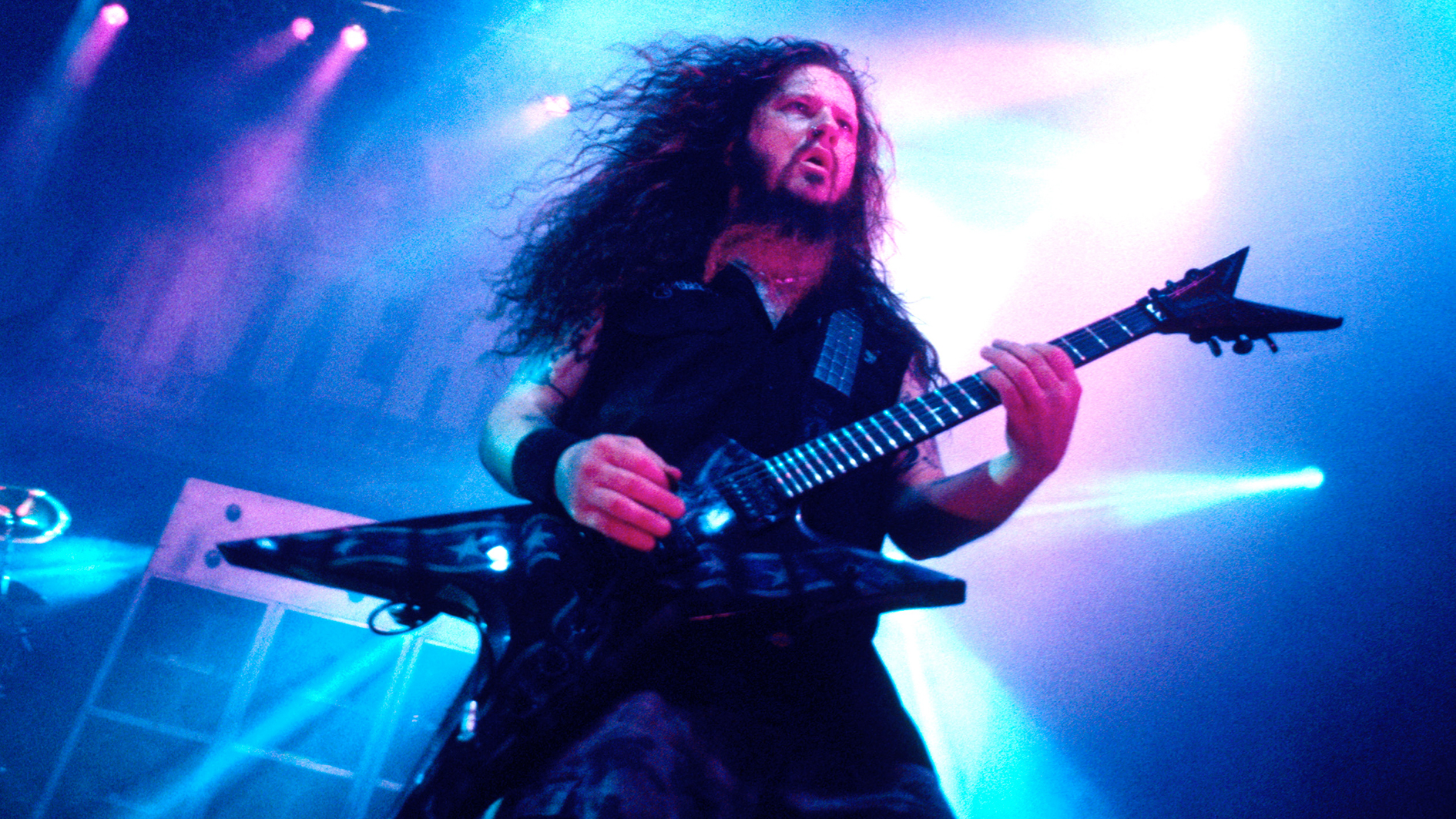
“Between Dime and Hetfield, those are the two biggest influences for me. The tastefulness of Dime’s riffs and solos is unparalleled. He goes into these bluesy lines, sounding like some Southern bluesman, and then a second later he instantly becomes a metal shredder with all the harmonics and horse squeals with the bar. When he pops that one on the third fret and pulls it back right into key with huge vibrato from the whammy bar, that’s such a signature Dime move.
“It was great being friends with him and being able to get outtakes from his guitar solos that didn’t get used on Cowboys From Hell and Far Beyond Driven. We were able to take them and chop them up and build a solo to put into a song, with his brother Vinnie’s nod of approval. That was on the song Side Of A Bullet on our album All The Right Reasons.
“To be able to listen to him and only him, and hear his accuracy, would just give you goosebumps. It was absolutely mind-blowing. He had a very influential tone, too. That Randall had every ounce of mid gone. It was all high-end and low-end, that’s it!”
3. Dave Mustaine
“I grew up with Megadeth in the '80s. I love the first few albums especially, but to be honest, they’ve released so many great records. I’d sit and listen to guitar players like Chris Poland and lose my mind. Chris actually released a solo album called Return To Metalopolis that was also really good and stood on its own.
“Then you get to Hangar 18, which must have had something like 15 solos in it from Dave and Marty [Friedman]. Speaking of Marty, his picking style is a little tough to watch but the end result is spectacular!
“I always found it interesting that Dave said he wanted to write riffs he could sing over but other guitar players would struggle to cover. Why, I have no idea. That might be a rumor or complete bullshit, but I remember hearing that he loved creating riffs that made it challenging to sing and play at the same time.”
4. Ian Thornley
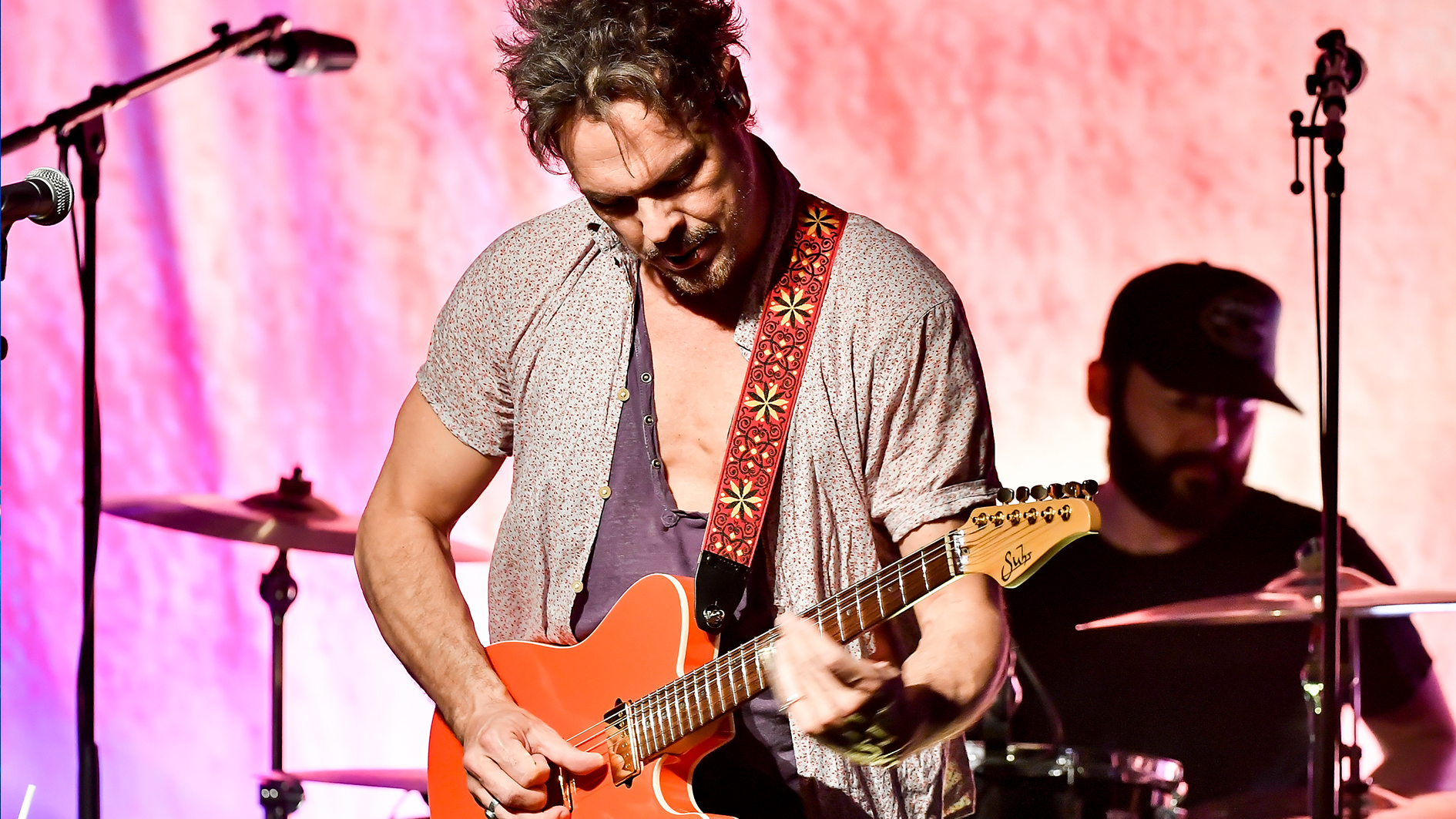
“Ian from Big Wreck is this mixture of so many different things. He’s a massive Zeppelin fan. They were originally signed by [legendary record executive] Ahmet Ertegun to Atlantic Records, so they sort of fell into that category a bit. But they also came out in the late '90s/early 2000s, so there was a little bit of Seattle in them, too – tuned down low for these grinding riffs.
“He would write these spectacular solos that would just sing to you. Ian is a dear friend and I ended up signing him to my label 604 Records for his solo project. Being able to sit in the room with him and bounce ideas back and forth, watching him effortlessly perform fretboard gymnastics was an absolute pleasure.”
5. Angus Young
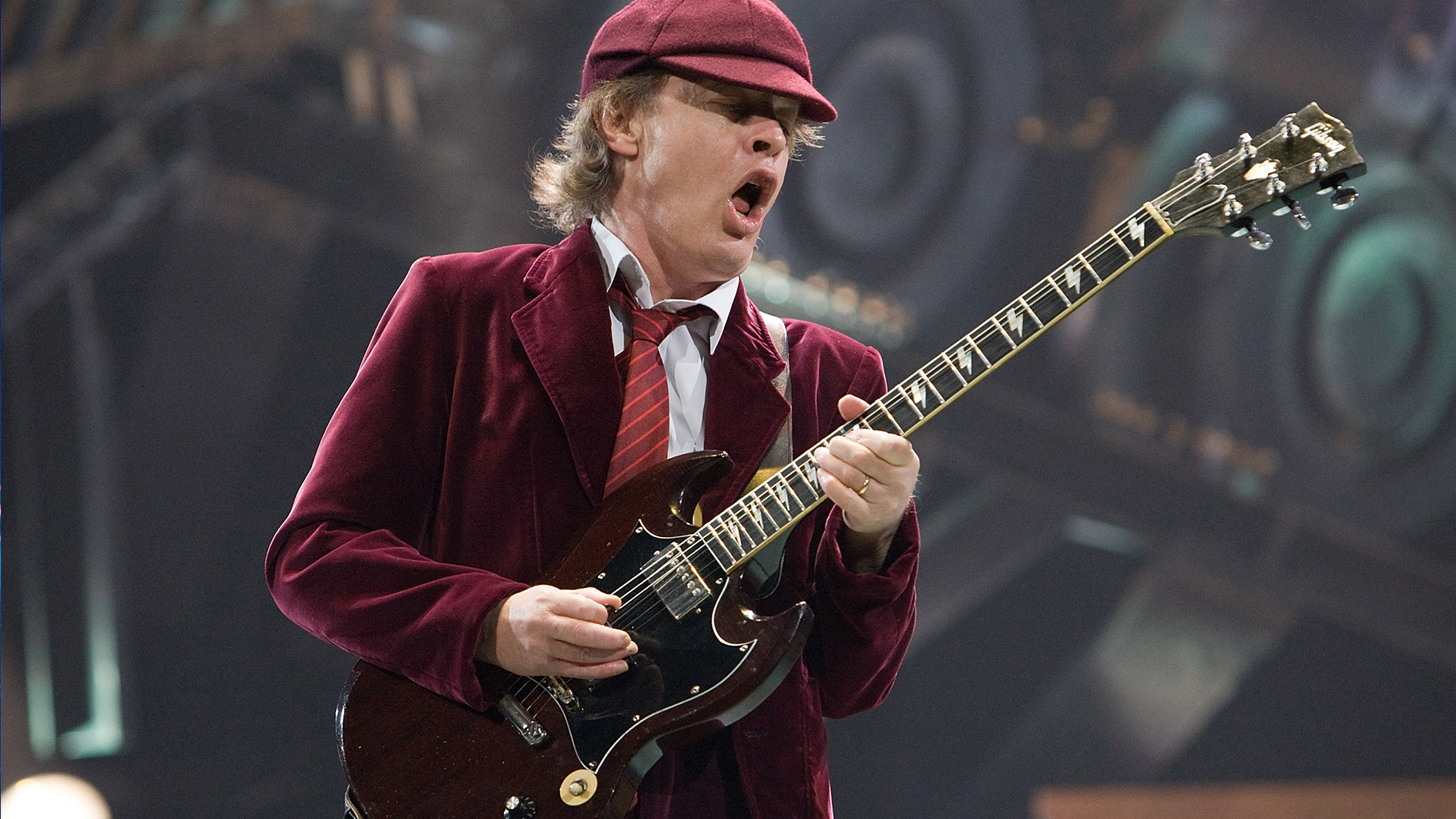
“We’ve got to touch on Angus! So you might hear songs like Back In Black when you’re 13 years old and metal is the biggest thing in your life and you might think it’s too simple. You might think there’s not enough there. Until you have progressed as a guitar player for a decent number of years later and have tried to write something that will create the involuntary head-bop or foot-tap, it seems really basic and easy…
“But that changes when you’ve tried to do it yourself. You have no idea how hard it is to create something that grooves like AC/DC until you’ve sat down and given it a go.
“And then the solos are something else. Angus has written some of the best leads ever because they’re so singable and memorable. Remember that moment when the riff kicks in on Thunderstruck! All of a sudden you’re asking yourself why your head is banging back and forth and you just can’t stop it!
I’ll be sat in a bar somewhere, hear Have a Drink on Me and I’ll grit my teeth and immediately want a shot of something
“Have a Drink on Me is another favorite. I’ll be sat in a bar somewhere, hear that song and I’ll grit my teeth and immediately want a shot of something. I could be sitting in church and need a shot if AC/DC are on. They just have this power, it’s fantastic. To be able to write things like that is much harder than it looks.
“My guitar tech for years has been a guy called Takumi [Suetsugu] and he’s looked after the biggest of the biggest – from Prince to Bon Jovi to Angus Young. You name it, at the largest stadium tours, Takumi’s always there working for somebody. And I went to an AC/DC show when we were off-tour and Takumi was with the boys.
“He took me backstage and before I even met them, he asked if I wanted to play Angus's SG. He put it on me and I started strumming it. The action was so light and it had the lightest gauge of strings I’d ever felt… it was like butter. I didn’t have to strum anything.
“That’s why those hammer-ons for Thunderstruck are so easy for him, you don’t need a right hand at all! I could not believe how effortless it was to play. Then I immediately asked Takumi to take a picture before Angus showed up to take his guitar back [laughs]!”
6. Scott Ian
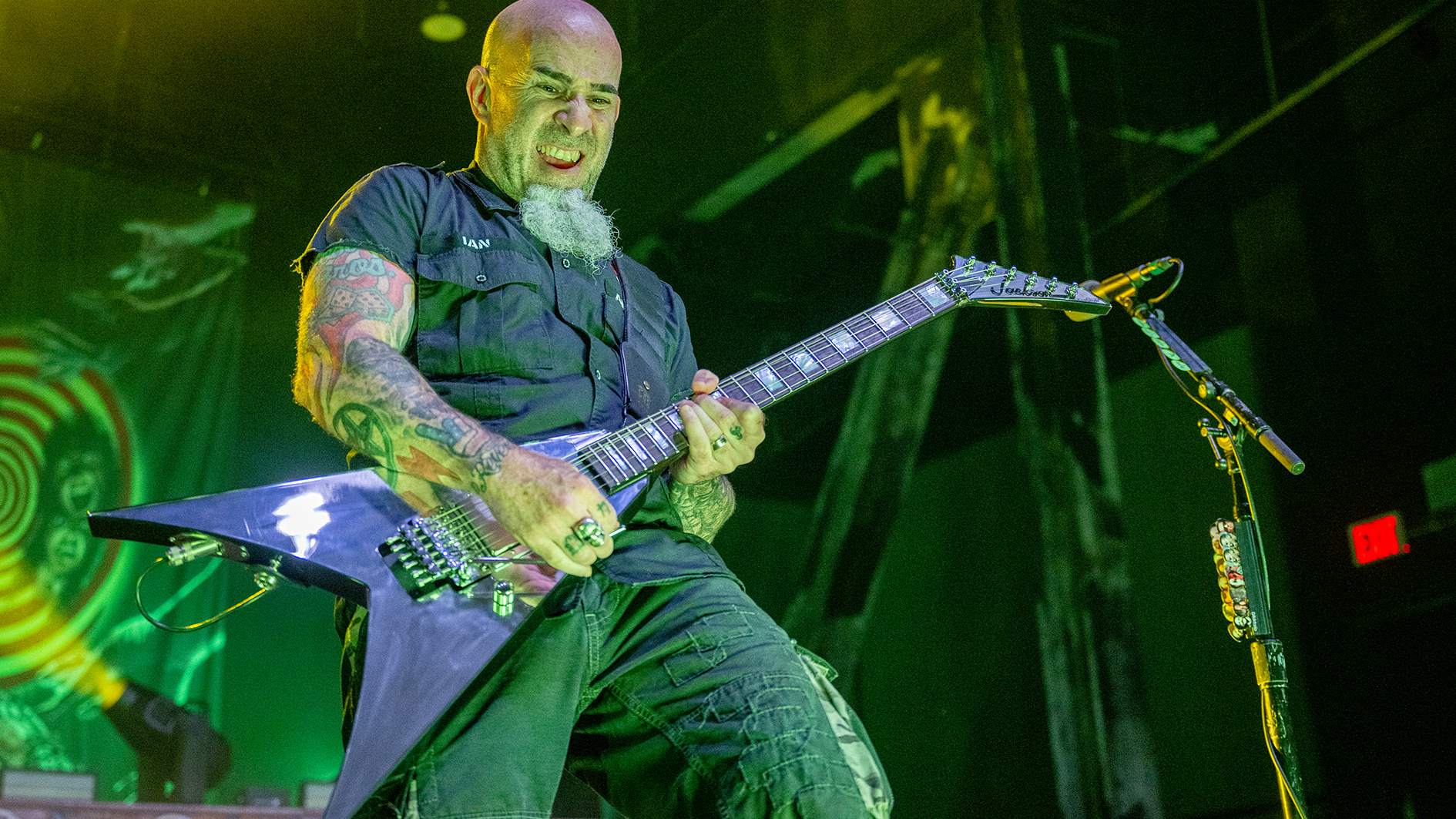
“He’s written so many amazing riffs – State Of Euphoria, Among The Living, the whole Persistence Of Time album. There are so many great riffs on there. Him and James Hetfield could have a right hand-off, to see who could accurately downpick fastest! That would be a great Guitar World magazine challenge. [laughs] Just seeing those guys together going as fast as they can go would be mind-blowing.
“For me it was The Big Three: Metallica, Megadeth and Anthrax. They were the staples of my childhood, getting played over and over. If you met me in 1989 or 1990, those three would have been in constant rotation.”
7. Nuno Bettencourt
“Extreme II: Pornograffitti had some legendary moments, like He-Man Woman Hater, thanks to that really cool riff. The Flight Of The Wounded Bumblebee intro was amazing until we all figured out he was using delay to do it [laughs]. We’ve become friends over the years and I had him play a solo on a song called For the River from our last album Feed the Machine.
“It’s such an honor to be able to call up one of your guitar heroes and ask if they want to play a solo on your record, and then they immediately respond with, ‘Just let me know when.’ It’s the coolest feeling. You get the goosebumps and butterflies, feeling like you’re 13 again.
“He told me this great story once: he was using Eddie Van Halen’s guitar tech when Van Halen were on downtime. He started playing He-Man Woman Hater during soundcheck and the tech said, ‘Oh, how do you know that riff, it’s a Van Halen riff that’s never been recorded!’ And Nuno was like, ‘What are you talking about?’ and the tech said that Eddie used to play that song every single soundcheck.
“Nuno looked at him with his eyes lighting up and said, ‘It’s our song and I wrote it, it’s called He-Man Woman Hater, and you just made my life!’ If you had one of the greatest players of all time jamming your shit every day, that would be the biggest compliment in the world!”
8. Jerry Cantrell
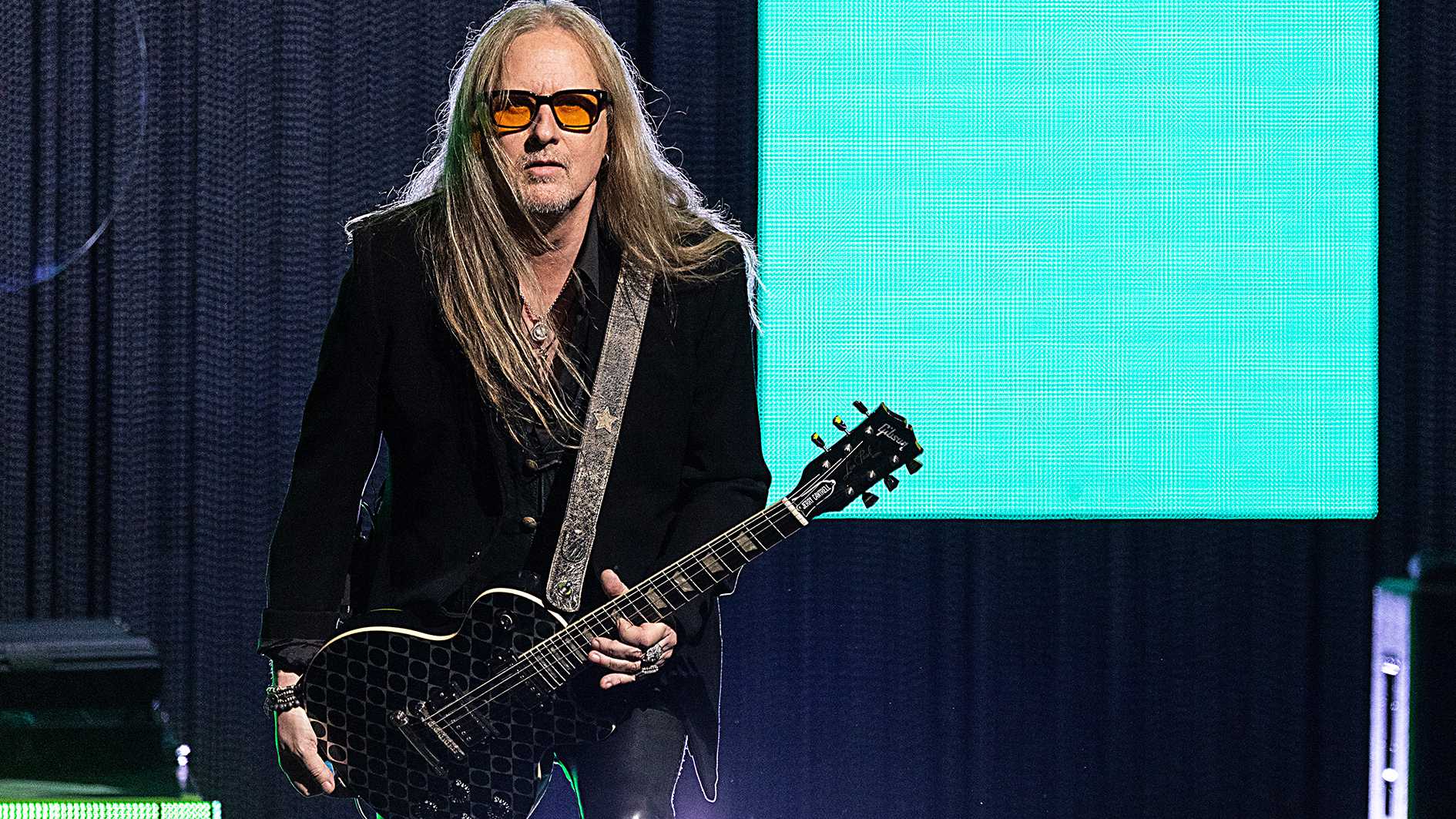
“Which Jerry did you think I was gonna pick? It’s not going to be Garcia! When Dirt came out, those riffs felt so bizarre, chromatic and strange. And then Layne [Staley] would sing these beautiful melodies over these non-typical chord progressions. Jerry would move around all over the place in structures you would just never go to. It added to the complexity of Alice In Chains in the most wonderful way.
“Even on the later records, he’d be pulling on this note like it’s a motorcycle engine. I was in the studio with him one time and he was telling me how he has to quad[-track] everything accurately… which can be tough to do. Jerry is a legend.
“He’s a very bluesy lead player and loves his wah. Every time he goes into a solo, you can’t stop yourself from singing along to it – whether you’re in the car or at the show, everyone has to join in. Yup, here comes Jerry! He’s a dear friend and one hell of a player.”
9. Tom Morello
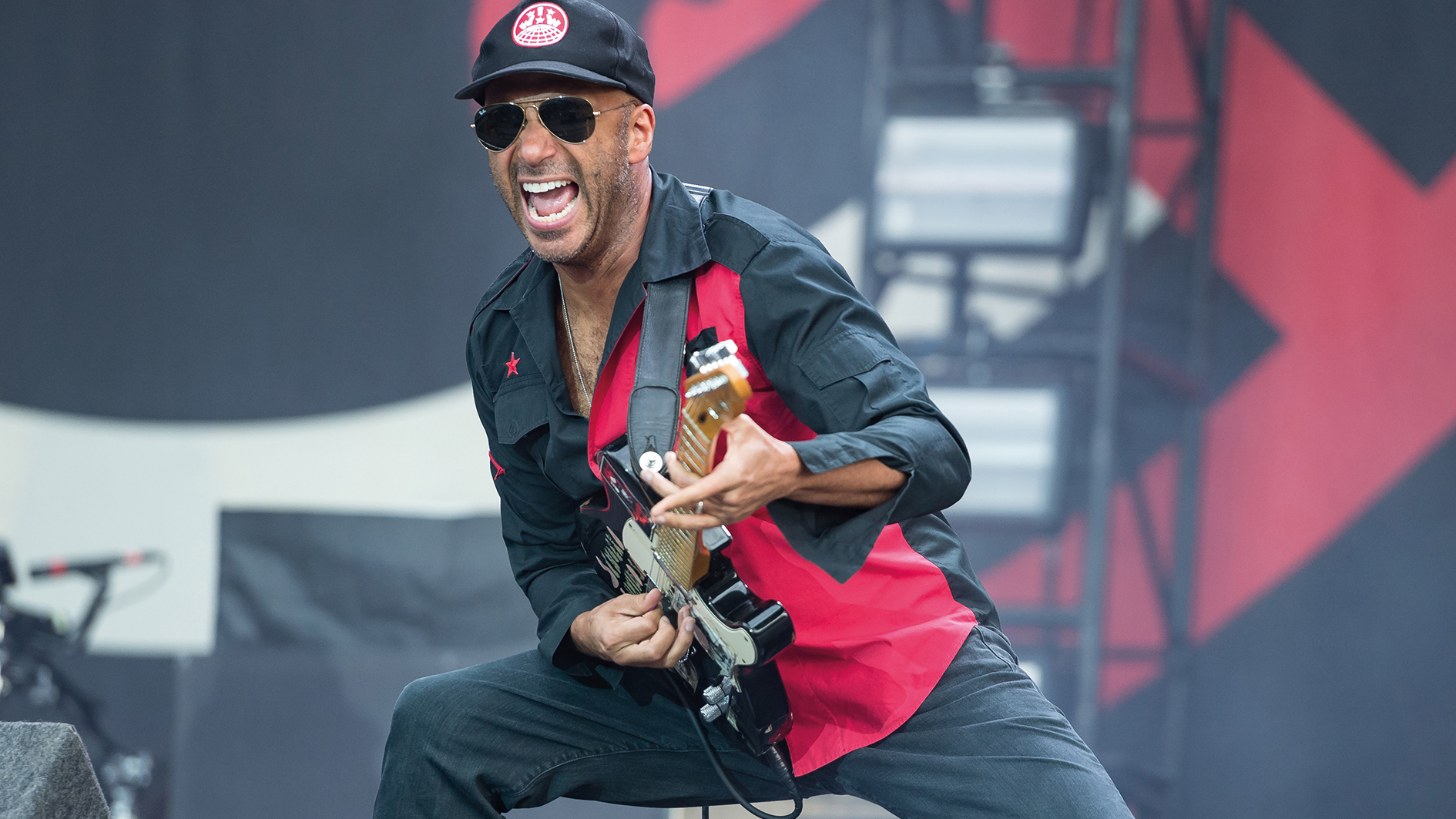
“It’s not so much his solo style because that’s so uniquely him, but his drop D groove riffs have been a big influence. I love his simplicity. As soon as Brad [Wilk] starts slamming those drums, it just gets really wide. You can see the audience jumping up and down in your mind whenever you listen to their music.
“There wasn’t a huge amount of gain but it still felt heavy. And even less gain with Audioslave, who also had their heavy tracks. So yeah, when it comes to riffs, Tom is definitely one of the main guitarists to have inspired me.”
10. Zakk Wylde
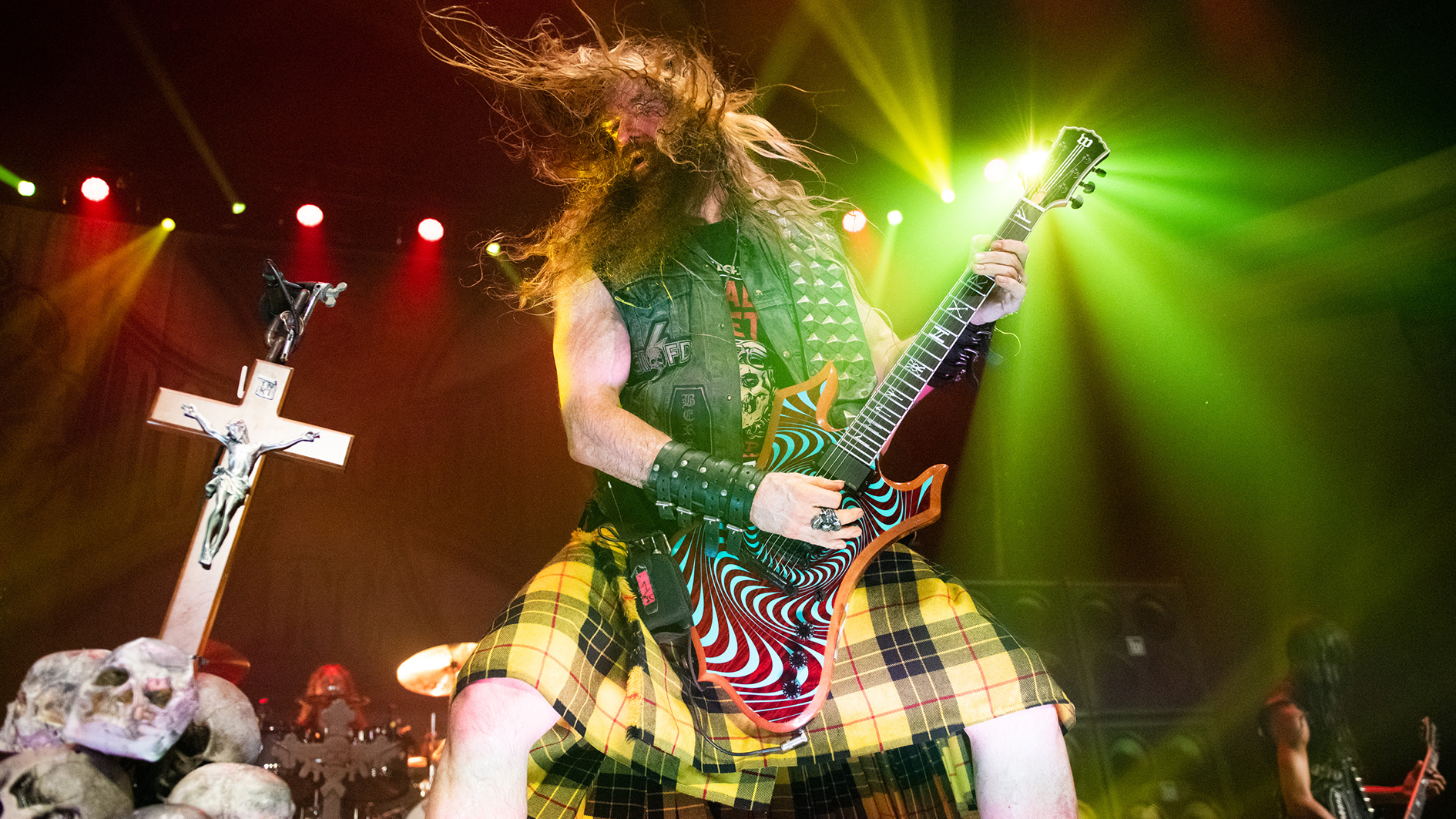
“His vibrato is crazy! He bends so far, it’s so cartoon, I love it. I’ve tried to emulate that a few times, where you are just pulling that string so sharp at points and especially once you add in the wah, it creates so much attitude.
“I guess a lot of people know him for his generous usage of pinched harmonics – though I call them squawks and he calls them pings. He will double them. He will harmonize them. It’s just so his thing, it’s great.
“I was working with a band called My Darkest Days who I signed to my label. They had a song called Porn Star Dancing and I called Zakk up asking if he’d be up for playing the solo. He said he’d love to so I went up to his place, and it was funny because trying to get him to play a solo gets really hard over three hours, because he just starts telling stories. They’re all Ozzy stories too, so they’re really, really good!
“I asked him if he would be willing to try and slightly emulate that No More Tears solo, especially the end bit, and he was up for it. So we did a little homage to No More Tears and it came out perfect. He’s such a good player.
“I’m so excited to see him play with Pantera because otherwise we’re not going to hear those songs live again. I get both sides of the fence and discussion. But selfishly, I want to see Phil [Anselmo] scream that stuff over a band playing loud.
“Hey, if all the boys could have gotten back together, that would have been the most wonderful thing in the world. But it just didn’t happen. So I’ll take this. If this is all we get, I’ll take it. I’m definitely buying a ticket, I’m going. And I guarantee you that half those people who won’t support it and swear they’re not going will end up buying tickets at the last minute, too!”
- Get Rollin' is out now via BMG.
Amit has been writing for titles like Total Guitar, MusicRadar and Guitar World for over a decade and counts Richie Kotzen, Guthrie Govan and Jeff Beck among his primary influences as a guitar player. He's worked for magazines like Kerrang!, Metal Hammer, Classic Rock, Prog, Record Collector, Planet Rock, Rhythm and Bass Player, as well as newspapers like Metro and The Independent, interviewing everyone from Ozzy Osbourne and Lemmy to Slash and Jimmy Page, and once even traded solos with a member of Slayer on a track released internationally. As a session guitarist, he's played alongside members of Judas Priest and Uriah Heep in London ensemble Metalworks, as well as handled lead guitars for legends like Glen Matlock (Sex Pistols, The Faces) and Stu Hamm (Steve Vai, Joe Satriani, G3).
“Every tour was the best I could have done. It was only after that I would listen to more Grateful Dead and realize I hadn’t come close”: John Mayer and Bob Weir reflect on 10 years of Dead & Company – and why the Sphere forced them to reassess everything
“Last time we were here, in ’89, we played with Slash on this stage. I don't remember what we did...” Slash makes surprise appearance at former Hanoi Rocks singer Michael Monroe's show at the Whisky a Go Go


![John Mayer and Bob Weir [left] of Dead & Company photographed against a grey background. Mayer wears a blue overshirt and has his signature Silver Sky on his shoulder. Weir wears grey and a bolo tie.](https://cdn.mos.cms.futurecdn.net/C6niSAybzVCHoYcpJ8ZZgE.jpg)

![A black-and-white action shot of Sergeant Thunderhoof perform live: [from left] Mark Sayer, Dan Flitcroft, Jim Camp and Josh Gallop](https://cdn.mos.cms.futurecdn.net/am3UhJbsxAE239XRRZ8zC8.jpg)





